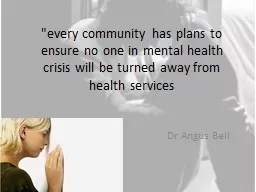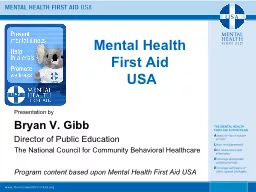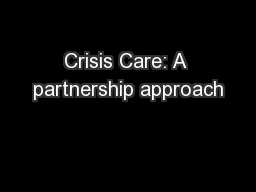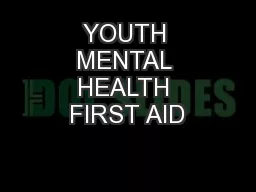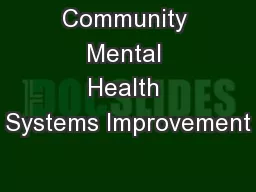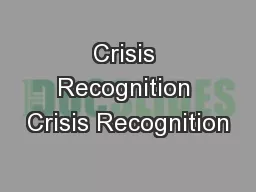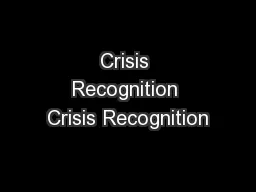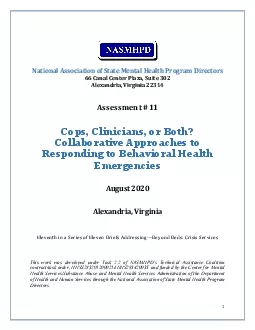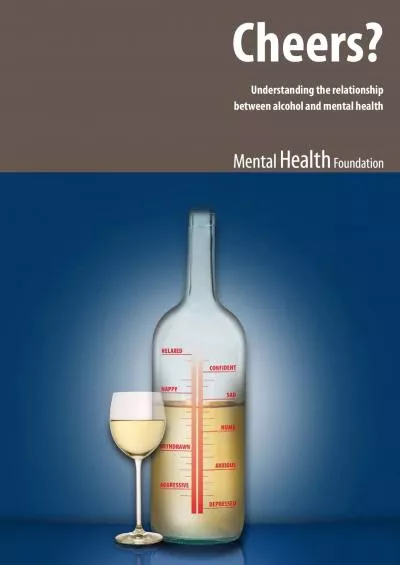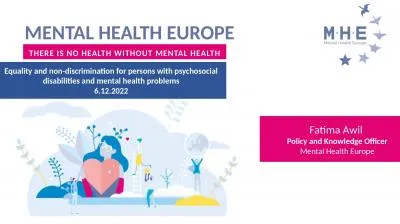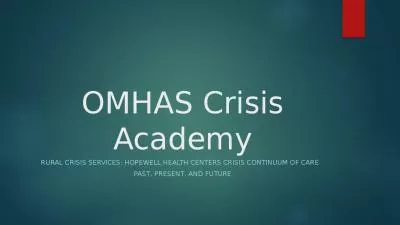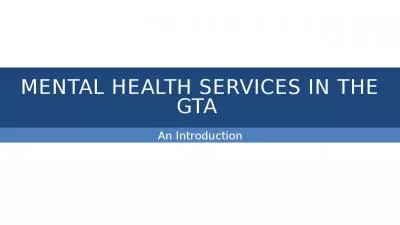PPT-Mental Health Crisis
Author : olivia-moreira | Published Date : 2017-07-27
C are for Children and Young People Why is it different What is the current experience Dr Liz FellowSmith Crisis care lead CampA Faculty RCPsych Aims Consider
Presentation Embed Code
Download Presentation
Download Presentation The PPT/PDF document "Mental Health Crisis" is the property of its rightful owner. Permission is granted to download and print the materials on this website for personal, non-commercial use only, and to display it on your personal computer provided you do not modify the materials and that you retain all copyright notices contained in the materials. By downloading content from our website, you accept the terms of this agreement.
Mental Health Crisis: Transcript
Download Rules Of Document
"Mental Health Crisis"The content belongs to its owner. You may download and print it for personal use, without modification, and keep all copyright notices. By downloading, you agree to these terms.
Related Documents


